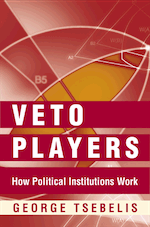Models for Congressional Reform

Tyler Cowen complains that it's hard to assess proposals for congressional reform since "There is no simple model at hand."
I think there's a tragic neglect of comparative politics in the United States, and my favorite relevant model is the one presented in George Tsebelis' Veto Players: How Political Institutions Work. The key issues here are trying to understand who has agenda-setting powers, how many veto players are there, and who the veto players are. And the distressing development in American politics over the past 20 years has been the tendency of routinized filibustering plus growing party discipline to make the Senate Minority Leader into a veto player, especially on things that aren't top-tier issues that dominate the public discussion.
That's not really a workable system, though I note that there's some reason to believe that presidential democracy is unworkable in general if you have ideologically coherent political parties. At a minimum, when the US conquers a country (Italy, Germany, Japan, Iraq) and sets up a new government, we almost never opt to replicate our own system. The exception is Afghanistan where Presidentialism was done at the behest of Hamid Karzai's Pashtun allies who thought this would help him monopolize power. I think time has proven that insightful, but mostly in a bad way.


Matthew Yglesias's Blog
- Matthew Yglesias's profile
- 72 followers



